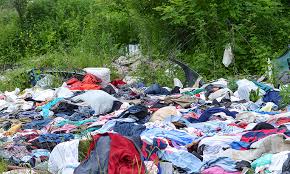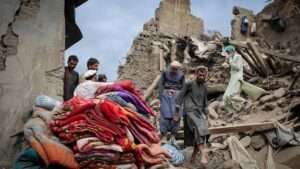Islamabad, Mar 30, 2025: Data highlighting the ‘International Day of Zero Waste 2025’ indicates that the global textile industry generates approximately 92 million tonnes of waste annually.
Every second, industries incinerate or dump a truckload of discarded clothing in landfills, posing a severe environmental threat.
As the world marks the ‘Day of Zero Waste’ on Sunday, experts highlight the waste generated by the fashion and textile sector.
The event underscores the environmental and social consequences of excessive production and consumption, exacerbated by the industry’s traditional linear economic model.
The rapid expansion of textile manufacturing and consumption is surpassing global sustainability efforts, leading to significant ecological, economic, and social repercussions, particularly in developing nations.
According to the United Nations, textile waste production doubled between 2000 and 2015, while the lifespan of garments declined by 36%.
Additionally, 11% of plastic waste originates from textiles and clothing, yet only 8% of textile fibers in 2023 were sourced from recycled materials.
Read More: HSY Becomes Brand Ambassador for SOS Children’s Villages Pakistan
The UN stresses that embracing a zero-waste strategy is vital for transitioning toward a circular economy.
clothing frequently ends up in low-income regions with inadequate waste management infrastructure, leading to uncontrolled dumping, burning, and severe environmental hazards.
In urban areas, textile waste often accumulates in landfills, taking decades to decompose while releasing harmful greenhouse gases.
In Pakistan, researchers estimate that textile waste reaches approximately 270,125 tonnes annually, with Karachi alone generating around 19,300 tonnes.
A study published in the Pakistan Journal of Scientific and Industrial Research reveals that lower-income households (Class C) discard the most textiles.
Meanwhile, high-income groups (Class A Plus) dispose of approximately 195 kg of clothing per year, whereas Class A and B discard 150 kg and 105 kg, respectively.
A major hurdle in managing textile waste sustainably in Pakistan is the lack of technical expertise, financial resources, and public awareness.
Studies suggest that limited awareness campaigns and the absence of sustainability topics from academic curricula leave even educated individuals in the country largely uninformed about textile waste recycling.
Read More: The Legend of Maula Jatt Returns to UK Cinemas This Eid
Furthermore, Pakistan’s textile industry remains inadequately equipped to implement sustainable waste recycling practices.
The sector currently lacks a cohesive approach to managing textile waste, missing out on economic benefits such as revenue generation from the domestic sale and export of recycled textiles, in addition to the environmental advantages of recycling and reusing materials.
“Fast fashion is exacerbating the global crises of climate change, biodiversity loss, and pollution,” stated Inger Andersen, Executive Director of UNEP.
“A shift towards a circular economy, emphasizing sustainability, reuse, and repair, is crucial. Consumers, industry leaders, and governments must collaborate to promote durable fashion and minimize the industry’s environmental impact.”









